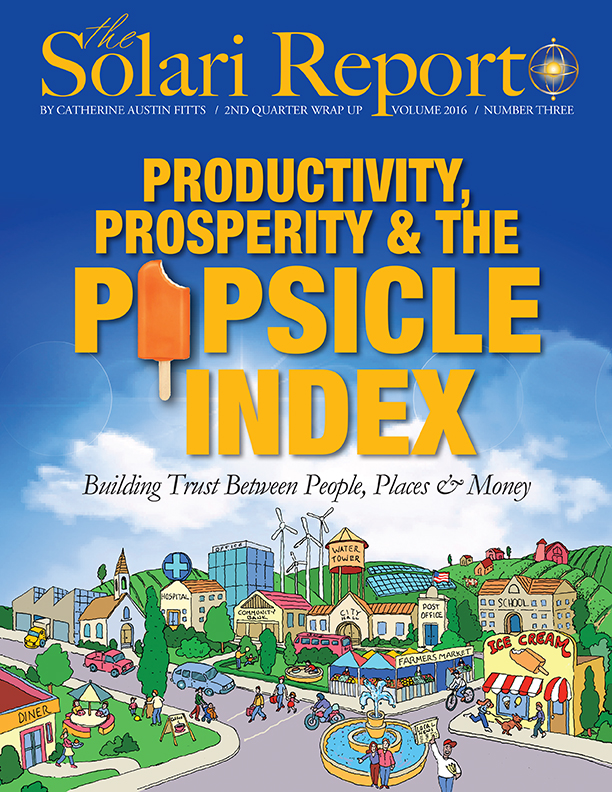
By Catherine Austin Fitts
I first came up with the notion of the The Popsicle Index in the first Bush Administration. After a month or so of being lobbied by various real estate interests, I realized that the driving force behind the lobbying efforts of the private interests I was regulating was the price of their stock. The organization of their profits seemed divorced from the well being of the living ecosystems that constitute a community or county. Indeed, our financial ecosystems are surprisingly disassociated from living ecosystems, very much as a result of the intervention of the federal government in spending, mortgage and bank credit and regulation. I began searching for a way of measuring the well being of a living ecosystem so it could be balanced with the S&P 500 or the Dow Jones Index in the mind of the body politic.
I wanted a way of expressing how people feel. Over the long haul, I find people’s personal assessments to be quite sound – and a refreshing alternative to government and think tank statistics that often reflect the biases of those who fund the research or the campaigns of those who fund the research – often times financial institutions. I also wanted a mechanism that would facilitate honest conversations between different generations, sexes and races. I wanted a mechanism that would help members of a community take collaborative action to move our well being towards optimal and to generate the highest emotional intelligence doing so. That is not the same as a statistically verifiable quantification of what outside experts calculate.
After various iterations I chose a popsicle as the object to be sourced by a child who was free to walk to the nearest place to access something children like to eat, inspired by Neal Pierce’s description of a child’s “room to roam” during the early 1990’s. I used the expression throughout the 1990’s as I was working on community venture funds. I found it to be an invaluable tool for encouraging conversations within a community. It was always remarkable to watch children and parents discover their enormously different perceptions of the local Popsicle Index, or men and women. And then see the “ah has” as they discussed cost effective actions and changes that would positively impact their Popsicle Index.
Various issues arose. First, a large food conglomerate owned the brand. Second, many people around the world have never heard of a “popsicle.” Third, occasionally, the term would start to go viral and we would run into bumps in the road. The time it really started to go, our website was hacked and suddenly Alan Greenspan gave a speech on why community indicators needed to be quantifiable by experts. A coincidence? Maybe. I tried using “Solari Index” for a time. That did not convey the same sense of intimacy that I was looking to convey.
Whatever the treat you want to use – popsicle, ice cream, soda pop, tangerines – I would recommend applying The Popsicle Index to your life. How do you estimate your Popsicle Index? What are the top ten things that make your Popsicle Index go up? What are the top ten things that make it go down? What are the actions you can take to bring change to those items and raise your Popsicle Index? Who can you collaborate with to raise your Popsicle Index?
Here is a library of links on oldie but goodie pieces I and the Solari team have written about The Popsicle Index.
Related Reading:
Introduction to Dillon Read & Co and the Aristocracy of Stock Profits:
https://vimeo.com/209784343
A Conversation About the Popsicle Index
What Can a Woman do to Help the Popsicle Index Rise?
Popsicle Culture: A Backcasting as a Report to Shareholders—1998
A Design Book for Solari Stock Corporations—1998
